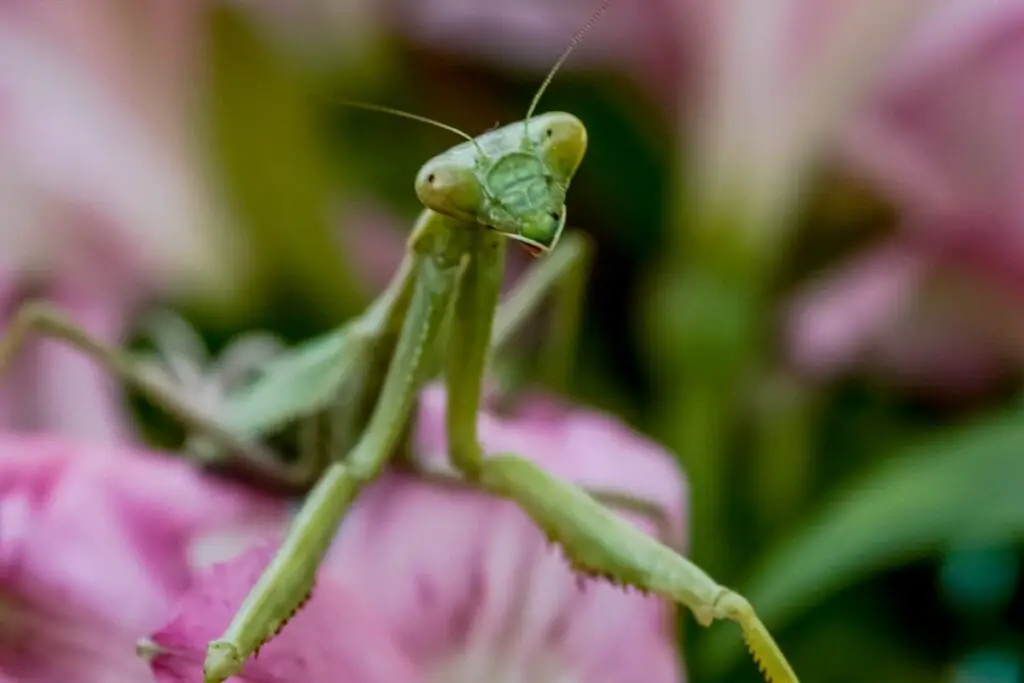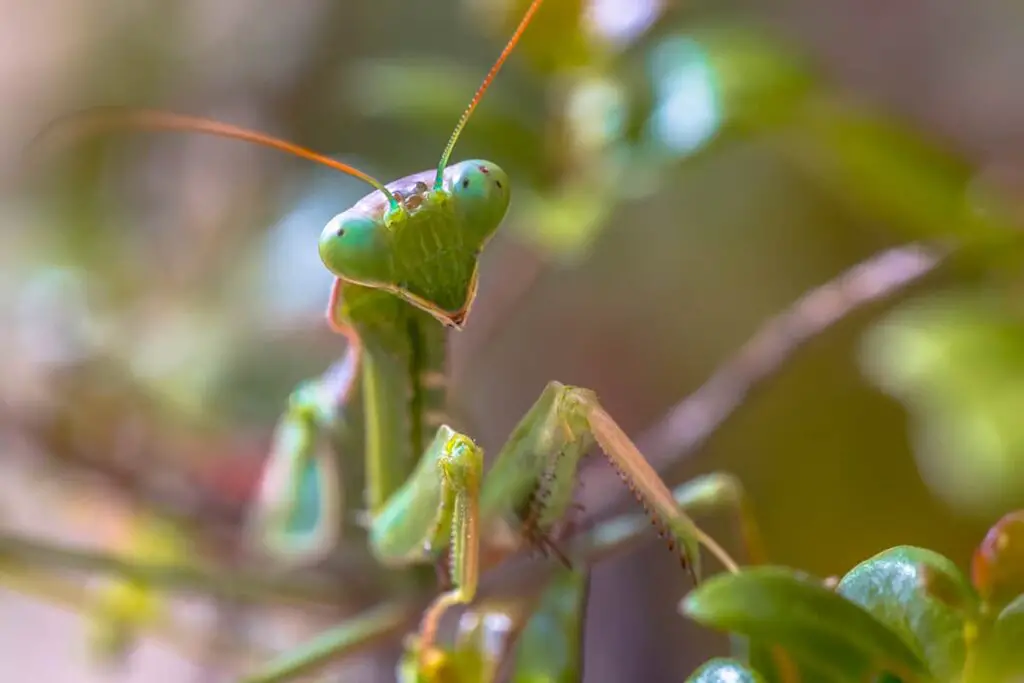Understanding and maintaining the health of your praying mantis requires careful attention to its unique needs. These captivating invertebrates are not only an enthralling addition to your home but also serve as a biological control by preying on various pests. A healthy mantis is active, alert, and maintains a regular feeding and molting cycle. The key to achieving this is replicating their natural habitat, which includes appropriate temperature, humidity, and space for hunting.
To optimize your mantis’s health, it’s crucial to provide a diet that meets their nutritional needs. Young mantids thrive on fruit flies and other small insects, while adults can handle larger prey such as crickets and moths. Ensuring that these prey items are gut-loaded, or nutritionally enriched, will impart those benefits to your mantis. For more detailed guidance, resources like the Orchid Mantis Care Sheet could be immensely helpful.
Moreover, although mantises are relatively low-maintenance, they do require some specific care. Factors such as molting, when mantises are particularly vulnerable, demand a careful and informed approach. To aid your efforts, comprehensive care guides like the Mantis Care Guide offer valuable insights into ensuring the longevity and vitality of these fascinating creatures.
Understanding Mantis Physiology
To ensure your mantis stays healthy, learning the basics of its physiology is crucial. This includes an understanding of the unique anatomical structures and the stages of development from an egg to an adult.
Anatomy and Physical Features
Your praying mantis has a distinctive body structure. It is characterized by its triangular head with bulging eyes, its elongated thorax, and the raptorial forelegs that it uses to snag prey. These physical features are vital for the mantis’s predatory lifestyle. The head can rotate 180 degrees, allowing the mantis to have a wide field of vision for spotting prey. Its compound eyes are adept at detecting movement, and the color vision helps during hunting at dawn and dusk.
Life Cycle and Development
The praying mantis undergoes an incomplete metamorphosis. This consists of three main stages: egg, nymph, and adult. The female mantis deposits eggs in a frothy liquid that hardens to form a protective case known as an ootheca. After hatching, the nymphs, which resemble small adults but without wings, go through a series of molts where they shed their exoskeleton. With each molt, they grow larger and develop more features of an adult mantis, such as wings and the ability to reproduce.
Creating a Supportive Habitat
To ensure your praying mantis thrives, you need to create a supportive habitat that mimics their natural environment. Attention to the details of the enclosure and diet is crucial for their well-being.
Optimal Terrarium Conditions
Temperature and Humidity: Your mantis needs a terrarium that maintains a temperature range between 70-75°F during the day and a slight drop at night. The humidity level should be kept at about 60%, with occasional misting to mimic dew.
- Ventilation: Adequate airflow is vital to prevent stagnant air and moisture buildup. Use a mesh lid or similar solutions for proper air circulation.
Size and Space: Select a habitat that is at least three times the length of your mantis and twice its width. This space allows for free movement and proper molting.
- Access to Light: Place the terrarium in a location with bright but indirect light, exposing your mantis to natural day-night cycles without harsh sunlight.
Diet and Nutrition
Feeding Schedule: Offer your praying mantis live prey, such as crickets or flies, every 2-3 days. The prey size should be smaller than the mantis’s head to prevent injury.
- Water: Provide water by lightly misting the enclosure as your mantis will drink the water droplets from the surrounding structures and foliage.
Maintain a balance in diet and adapt to your mantis’s changing appetite as they grow, ensuring they receive adequate nutrition for optimal health.
Health Monitoring
In the realm of health monitoring, your focus should be pinpointed on spotting common health issues early and adopting preventative care measures to maintain optimal well-being.
Common Health Issues
Chronic diseases such as heart disease, diabetes, and respiratory conditions are prevalent across populations. You’ll often find wearable health devices recommended for continuous monitoring, making it practical for you to keep an eye on vital health signs.
Preventative Care
Preventative care is key to avoiding the escalation of common health issues. It includes regular health screenings, vaccinations, and the digital health tools like those from Mantis Health which offer sophisticated platforms to improve surgical outcomes and possibly prevent complications. Adopting a healthy lifestyle that incorporates balanced nutrition and regular exercise is vital to your preventative strategy.
Handling and Interaction
In the realm of healthcare technology, particularly with innovations like the Mantis Health systems, understanding the appropriate handling of equipment and recognizing signs of stress in patients and personnel are vital for success.
Appropriate Handling Techniques
When using devices such as the minimally invasive retractor system, it’s crucial that you follow the manufacturer’s guidelines. This equipment, known for its patented spinning blade, requires precise handling:
- Read the Manual: Familiarize yourself thoroughly with the operation instructions before use.
- Grip and Posture: Ensure you maintain a comfortable grip and posture to avoid strain.
- Maintenance: Perform regular maintenance checks to keep equipment functioning optimally.
Signs of Stress and Overhandling
With the introduction of high-tech tools in the surgical field, such as Mantis Health’s 3D Digital Glasses, being aware of cognitive load and overhandling is just as critical:
- Visual Fatigue: Take note of any discomfort or tiredness in your eyes when using visualization tools for extended periods.
- Muscle Strain: Be attentive to any muscle strain, which may indicate overuse or poor handling of equipment.
Recognizing these signs can prevent longer-term stress injuries and ensure a safer, more productive environment for healthcare professionals and patients alike.
Frequently Asked Questions
In this section, you’ll find practical advice on caring for praying mantises, including diet, habitat, health concerns, and more.
How can you tell if a praying mantis is healthy?
A healthy praying mantis should have a vivid color, clear eyes, and an active demeanor. Its movements should be quick and precise.
What should be included in a praying mantis’s diet for optimal health?
Your praying mantis’s diet should primarily consist of live insects, such as flies, moths, and small crickets, which provide the necessary nutrients for their health.
How can I create a suitable habitat for a pet praying mantis?
Create a habitat with ample vegetation for climbing and hiding, maintaining appropriate humidity and temperature levels akin to their natural environment.
What are common health issues in praying mantises and how can they be treated?
Common issues include dehydration, lack of appetite, and molting problems. Keeping the habitat humid and providing a varied diet can help prevent these issues.
How frequently should a praying mantis be fed to maintain good health?
Juvenile praying mantises should be fed daily, and adult mantises every two to three days, but observe your pet’s behavior and adjust as needed.
What are the signs of a sick praying mantis and how can you nurse it back to health?
A sick mantis may show lethargy, decreased appetite, or fall more frequently. Consult a vet specializing in insects and ensure its habitat is optimal for recovery.
Driven by a passion for those tiny creatures that rule our world, we at Bug Domain strive to be your go-to resource for information on insects.




